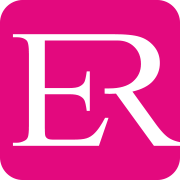Step away from the screen: why pen and paper still reign supreme in a digital world
In today's world, digital productivity systems are all the rage. From to-do apps to online calendars, there are countless tools out there designed to help us stay organised and on top of our work. There are countless posts debating the effectiveness of each, leading, at times, to amusing disagreements. But despite their popularity, I believe that physical productivity systems are still the superior choice.
This time last year I swapped from a fully digital system to a hybrid system and have seen a vast increase in my output. Notable changes have been seen in completing goals, daily tasks and daily content creation. Which in turn has allowed me to add in video creation and all the learning that goes with it.
In this post, I'll explore some of the reasons why and see if I can convince you to give the old-school method of putting a beautiful pen to stunning pages.
Out of sight out of mind?
First of all, let's talk about the concept of "out of sight, out of mind". This is a phenomenon that many of us have experienced at one time or another (though you may have forgotten!). You write something down in your digital to-do app, and then promptly forget all about it because it's buried in a long list of other tasks. With a physical productivity system, however, your tasks are always right in front of you. You can't ignore them or forget about them because they're literally staring you in the face. If you write your to-do’s each day then repeatedly writing “laundry - get out of drier” will eventually lead to you actually doing the task, just so you don't have to write it again.
Another advantage of physical productivity systems is that they offer a tactile experience. There's something satisfying about crossing an item off a physical to-do list or moving a paper clip from one section of a board to another. These actions provide a sense of progress and accomplishment that you just can't get from tapping a button on your phone.
Physical productivity systems can also help to reduce distractions. When you're using a digital tool, it's all too easy to get sidetracked by other apps, notifications, or even just the lure of mindlessly scrolling through social media. With a physical system, however, you're less likely to be distracted by the endless possibilities of the internet. Instead, you can focus on the task at hand without the constant temptation to switch over to something else. I mean, I think we have all had our attention grabbed by a notification or 6,000!
Convenience over healthy boundaries?
Of course, one of the biggest arguments in favour of digital productivity systems is that they're convenient. You can access them from anywhere, at any time, as long as you have a device with an internet connection. But in reality, this convenience can actually be a double-edged sword. When your productivity system is always available, it can be difficult to switch off and disconnect from work. Who needs your to-do list flashing up on your screen as you try and enjoy a game of candy crush? This can lead to burnout and decreased productivity in the long run.
With a physical productivity system, on the other hand, you can create clear boundaries between work and leisure time. When you're done with work for the day, you can physically close your notebook, symbolically marking the end of your workday. This kind of separation can help you to recharge and come back to work the next day feeling refreshed and ready to tackle new challenges. Equally, if something pops into your head while you are sat enthralled in another episode of Physical 100 you don’t have to fire up your laptop - grab a pretty notebook and log it, then go back to feasting your eyes on those contestants.
Release your creativity and embrace your uniqueness
Another advantage of physical productivity systems is that they're customisable. When you're using a digital tool, you're often limited by the features and functionality of the app. But with a physical system, you can create something that's tailored specifically to your needs. Maybe you prefer a certain style of notebook or planner, or maybe you like to use different coloured pens (another fountain pen anyone?) to categorise your tasks. You may even like to have different notebooks for different thoughts and ideas, creating clear separation and retrieval. Whatever your preferences, a physical system can be customised to suit your unique working style.
Finally, there's something to be said for the aesthetic appeal of a physical productivity system. When you take the time to create a beautiful, visually appealing planner or notebook, you're not just creating a functional tool – you're creating a work of art (I can certainly attest to this). This kind of attention to detail and creativity can help to spark your own creativity and motivation, making it easier to stay on track and get things done.
Final thoughts
I would like to leave you with the following thoughts.
While digital productivity systems may have their advantages, I believe that physical systems are still the superior choice.
They provide a tactile experience, reduce distractions, offer customisation, and create clear boundaries between work and leisure time.
Plus, they're just plain beautiful to look at! So if you're in the market for a new productivity system, consider going old-school and trying out a physical option. You might be surprised at just how effective it is.












